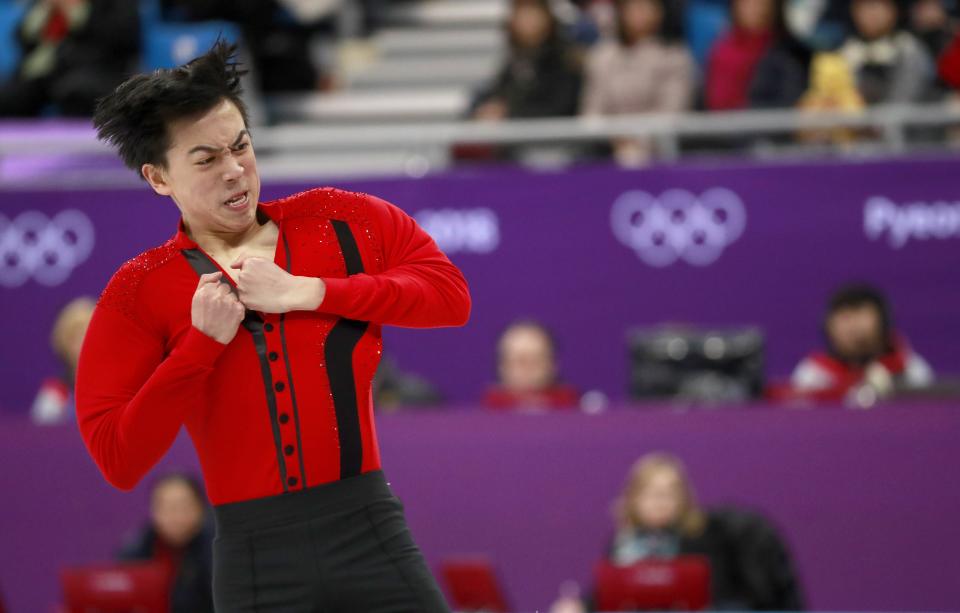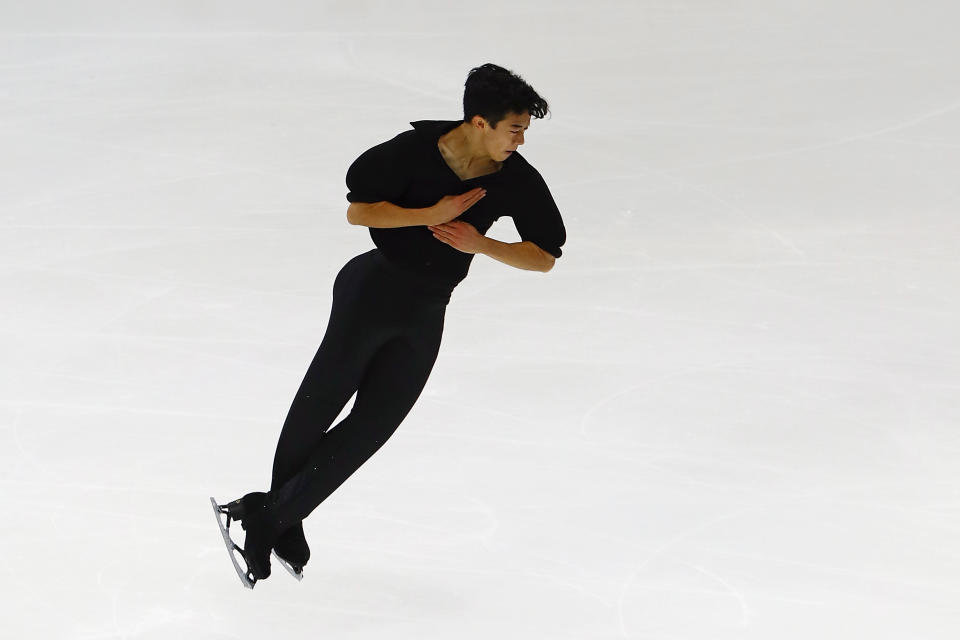Figure skating's final frontier: Is the quintuple jump possible?
GANGNEUNG, South Korea — At the 2010 Winter Games in Vancouver, just two Olympics ago, the three medalists in men’s figure skating attempted a combined one quad jump, by silver medalist Evgeni Plushenko.
Saturday, the three men who made the podium attempted 10 in the long skate. Americans Nathan Chen and Vincent Zhou tried a combined 11 between them alone. They finished fifth and sixth.
This is how fast men’s figure skating evolved. Once a seemingly impossible outlier is now something to be ripped off every 30 seconds. In 2010, Plushenko, angry judges didn’t reward him for pushing the limits of competition, declared the quad “the future of figure skating.”
He was right.
So how long until the “quint” – five rotations – is the future of figure skating?
It might be awhile. If ever. But you never know.
“It would be extremely difficult and you’d probably break a leg doing it,” Zhou said.
“I think doing a quint is very, very difficult,” Chen said. “Who knows? Four, eight years ago people said doing more than two quads in a long was probably impossible. Here we are.”

First, a very basic and very quick science lesson (note: very basic and very quick; it’s a lot more complicated):
To pull off spinning in the air a skater needs time off the ice and speed of rotation. Air time is generally achieved by jumping as high as possible (20 or more inches) although it can also be part as great of a distance as possible. Whatever keeps you in the air.
Rotation is done by perfectly timing the moment you pull your body in, jamming your legs together and your arms to your chest, creating the power to spin quickly. The tighter you get, the faster you rotate. Skaters can also take off at a slight angle to help with this, among other tricks. Speed into the jump and the push off the ice also contribute.
To this point, if you can get in the air long enough and create enough torque with your body, a male skater can get around four times and a woman three.
How do you get to five, though?
“You have to have time in the air; it’s not just rotation ability and torque,” said Tom Zakrajsek, an elite American coach out of the Broadmoor Skating Club in Colorado Springs, Colorado. Zakrajsek works with, among others, Zhou and Marai Nagasu, who last week became the first American woman to land a triple axel at the Olympics and competes again here Wednesday.
“Right now, the big jumpers are about 0.7 seconds-ish in the air, maybe a little more,” Zakrajsek said. “So you probably need to get closer to one second.”
This is the big issue. If it was merely spinning faster, then a quint would be just a matter of time. There isn’t a lot of room for improvement on that, though.
“If you see a skater do a triple toe and their legs open up, if they have extra room, you think they definitely can fit in an extra rotation,” Zhou said. “On quads, you never see that. If there’s no room for error on a quad, there’s no room for a quintuple.
“It would take Hollywood-level science bending, because to do a quintuple you’d have to be rotating at the maximum speed aerodynamically possible for a full second in the air,” Zhou continued. “That’s what I read in a study about it, anyway. That’s not physically possible. The maximum airtime ever is about 0.8 seconds. Most people jump between 0.6 and 0.73 or so.”

Zakrajsek said it might require an equipment modification, maybe allowing some kind of hinge on a skate that could propel athletes into the air for longer.
What about the ever-improving athlete?
That’s inevitable, but in many ways Zhou, Chen and two-time Olympic champion Yuzuru Hanyu are the ideal for men’s figure skating. They have powerful legs but are generally slight of build, between 130-140 pounds. There’s not just less to lift off the ice, but less to whip around in the air.
The next step actually isn’t the quint, but the quad axel.
First, a very basic and very quick figure skating lesson (note: very basic and very quick; it’s a lot more complicated):
Most jumps in figure skating, namely the “Lutz” and the “toe,” begin with a skater going backward, then spinning and landing on a specific side of a blade and foot. By doing that, a skater can actually get half a rotation in while he or she is picking their skate into the ice, before jumping.
An axel, however, is done face first, although they land backwards. It’s sort of 4½ rotations, depending on how you count it. Again, complicated.
No one has completed one in international competition, although Hanyu said he aspires to be the first. Artur Dmitriev Jr., a 25-year-old Russian and the son of a former Olympic pairs medalist, attempted it in a video posted on Facebook which was immediately dissected by skaters around the globe. Dmitriev falls at the end, but it opened eyes.
“It’s really close,” Zakrajsek said. “When someone like that can do it, it shows you someone is going to figure that quad axel. The quint? I don’t know.”
The key may simply be the will of some kid somewhere. Zhou and Chen, at ages 17 and 18, respectively, are pulling off things that a skater such as Evan Lysacek, who won gold in Vancouver without a quad, couldn’t have imagined. Six quad attempts in one skate?
Lysacek is only 32.
So is there a 12-year-old, or 5-year-old, watching Zhou, Chen and the others bring an X-Games “Watch This” mentality to figure skating and dreaming of going bigger?
“That would be pretty cool being the first one to do the quint,” Chen said.
Nothing motivates young men like being cool.
More Olympic coverage from Yahoo Sports:
• Russian curler formally charged with doping in PyeongChang
• Ice dancer on wardrobe malfunction: ‘It was my worst nightmare’
• Adam Rippon won’t actually be an NBC Olympic correspondent
• Vonn playing ‘mind games’ after third-place training run
• Gold medalist comforts silver medalist in true Olympic moment

